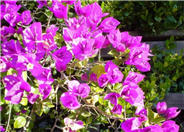
Common name:Bougainvillea Selection
Botanical name:Bougainvillea spectabilis
This species is hardy and vigorous, with a showy, ornamental display of puple color. It blooms well in areas with cool summers. Frost tender.
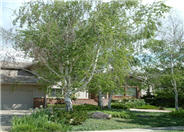
Common name:White Birch, European White Birch
Botanical name:Betula pendula
This medium-size weeping tree will grow to about 40' tall and has a whitish/brown bark with deciduous green leaves. This plant has high water needs when in a full sun situation. It is best used along riparian or pond areas, in wet soils, or on properties with high rainfall or water tables.
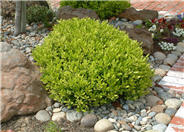
Common name:Wheeler's Dwarf Pittosporum
Botanical name:Pittosporum tobira 'Wheeler's Dwarf'
This handsome dwarf form of the Pittosporum tobira grows into a low, dense mound that is covered with glossy, evergreen foliage.
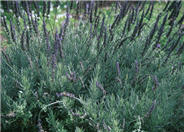
Common name:Goodwin Creek Gray Lavender
Botanical name:Lavandula 'Goodwin Creek Gray'
Lavandula 'Goodwin Creek Gray' is an evergreen shrub. This dense foliaged plant grows to 2.5-3 ft. high and 3-4 ft. wide, with silvery leaves that are toothed at the tips. Deep violet-blue flowers from spring to late fall.
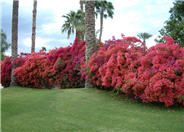
Common name:Bougainvillea, Barbara Karst
Botanical name:Bougainvillea 'Barbara Karst'
The large amount of flamboyant color on this species creates a wonderful accent in a garden. Varieties can be in bush or vine form; colors vary. Once established, they tend to be carefree. All varieties are susceptible to frost damage. The 'Barbara Kos variety blooms bright red in full sun; more crimson if in shade. It blooms early and long. Frost tender.
| Designer: | Medici Look Water Feature |
Photographer: GardenSoft |
Soils and Compost:
Maintain a two to four inch layer of mulch on the soil surface to reduce weeds, infiltrate rain water, and reduce compaction.
Water Saving Tip:
Check your irrigation systems at least once per month (or after each mowing).
Monitor each cycle to identify obvious problems and to confirm that all of the components are functioning properly.
Contact your water agency for assistance.
Integrated Pest Management:
Drip and other smart irrigation delivers water directly to roots, allowing no excess water for weeds.
